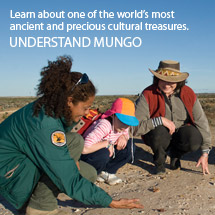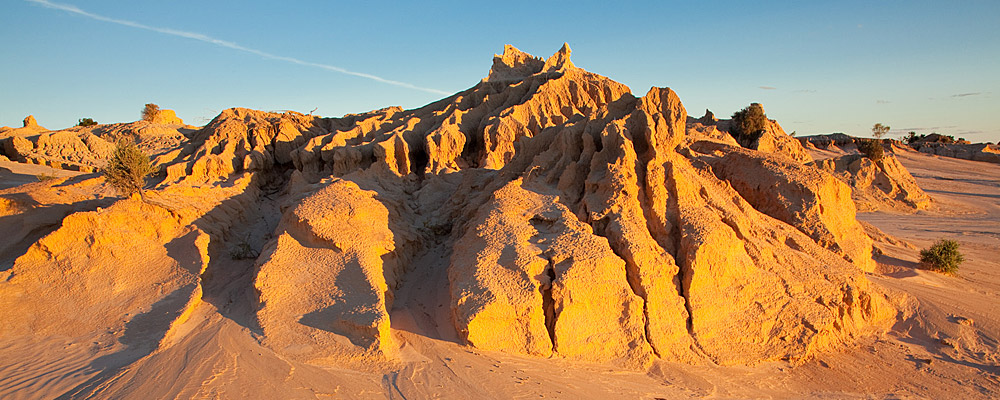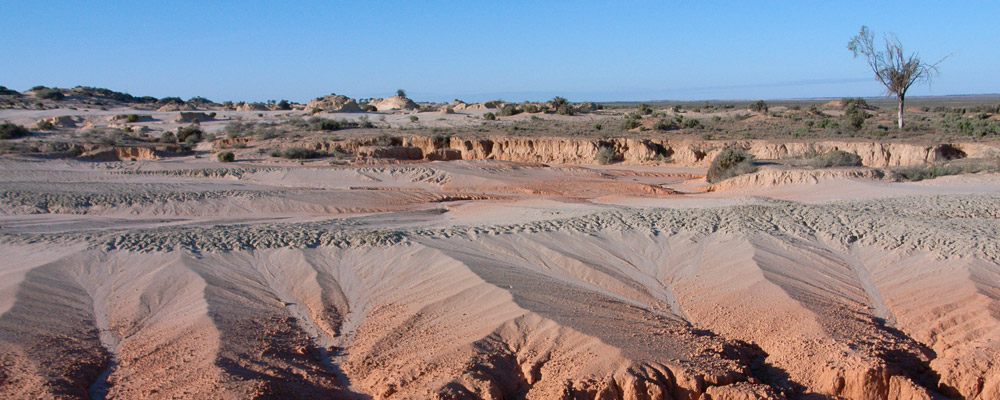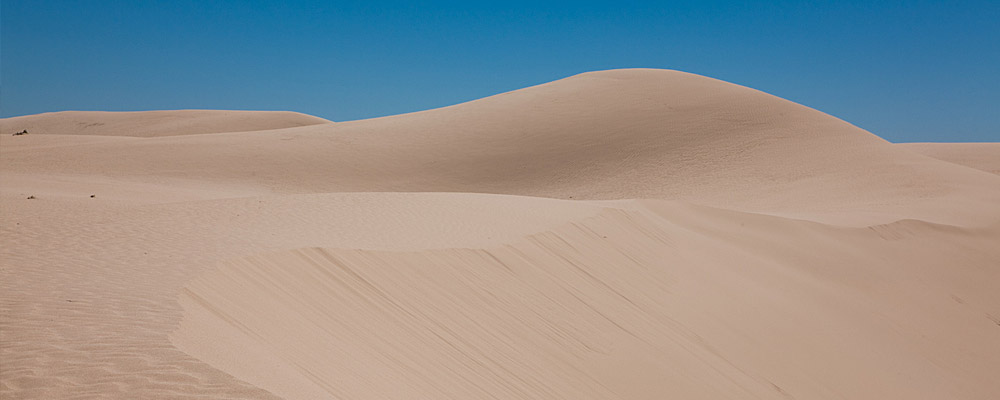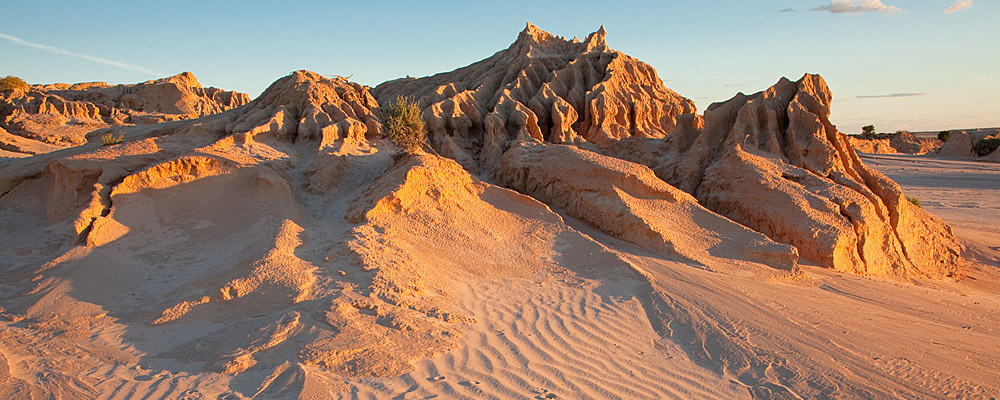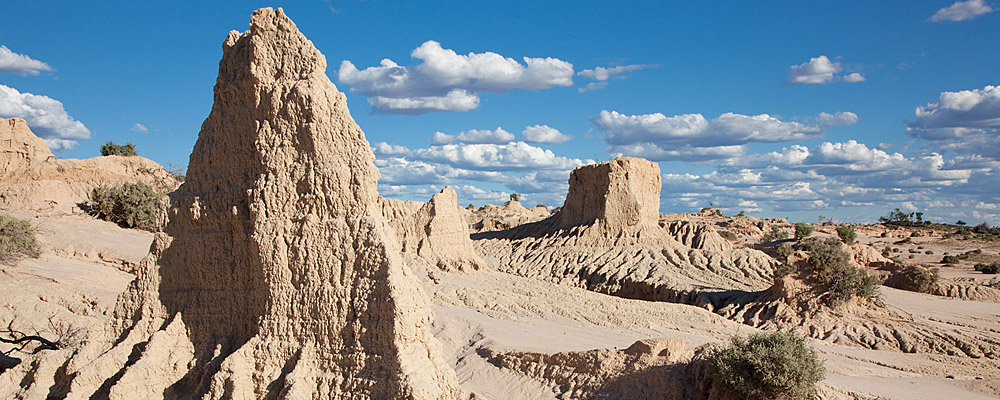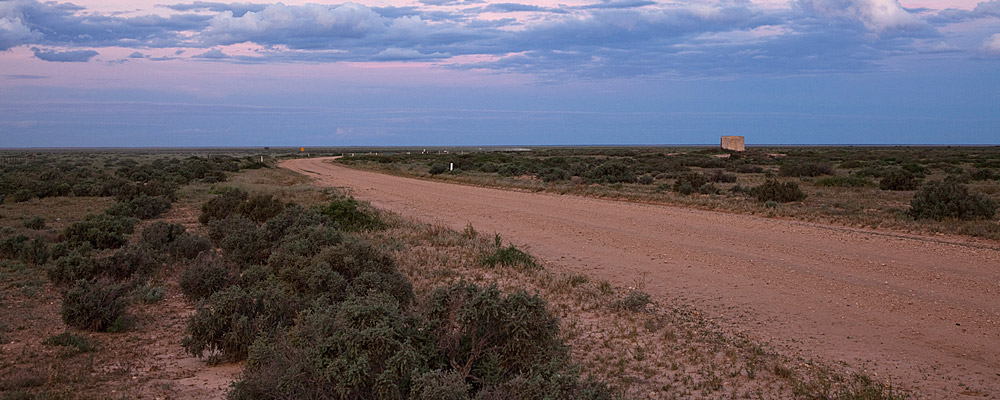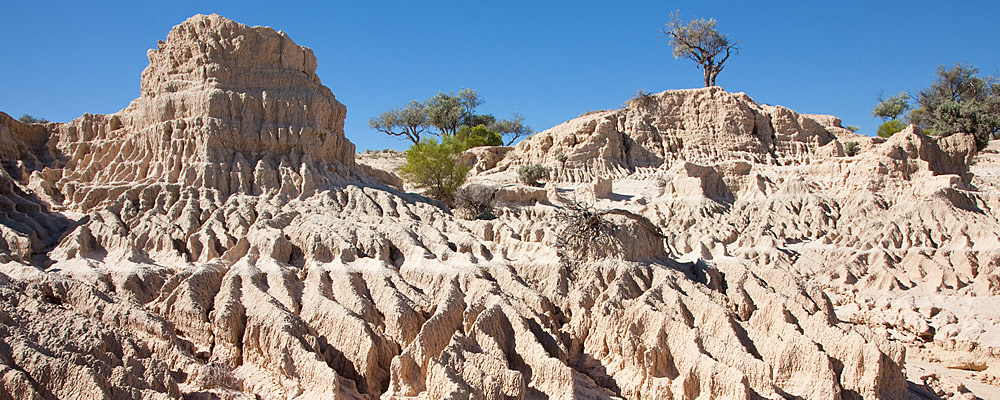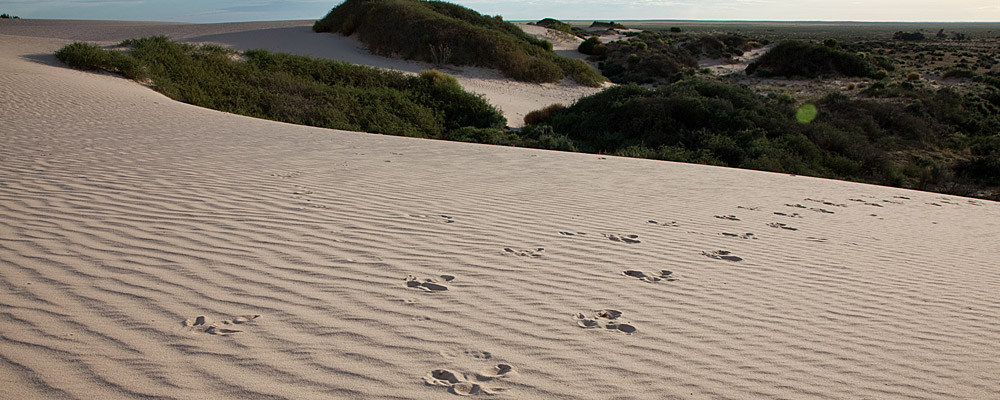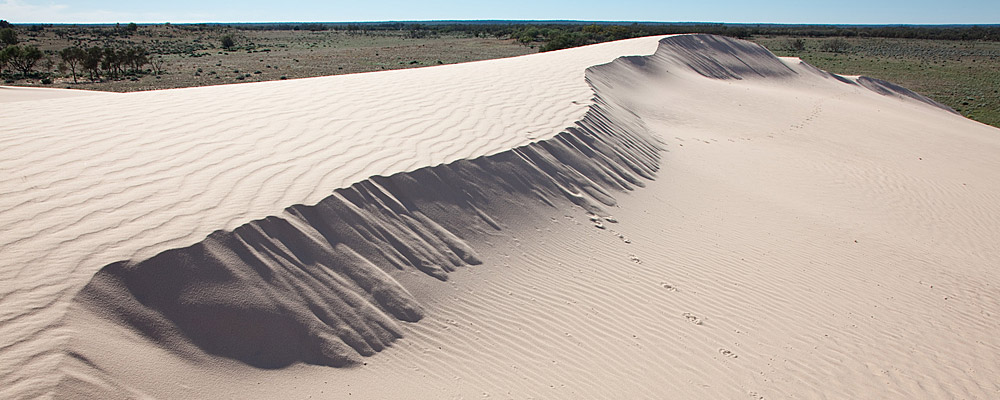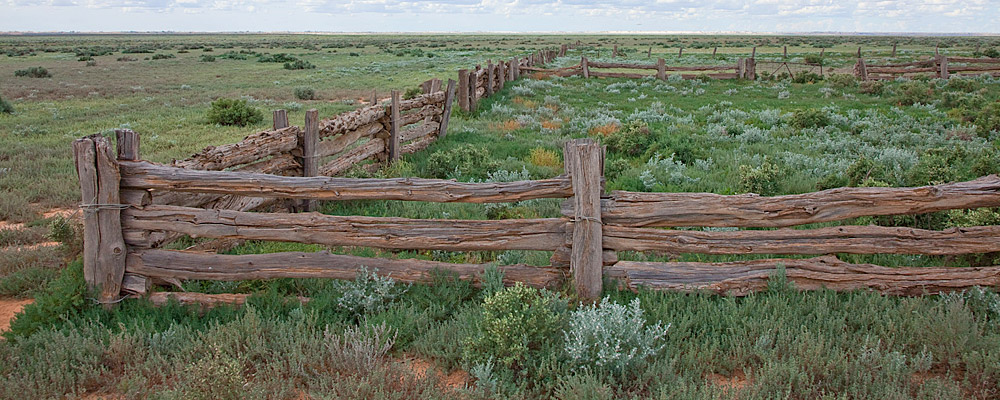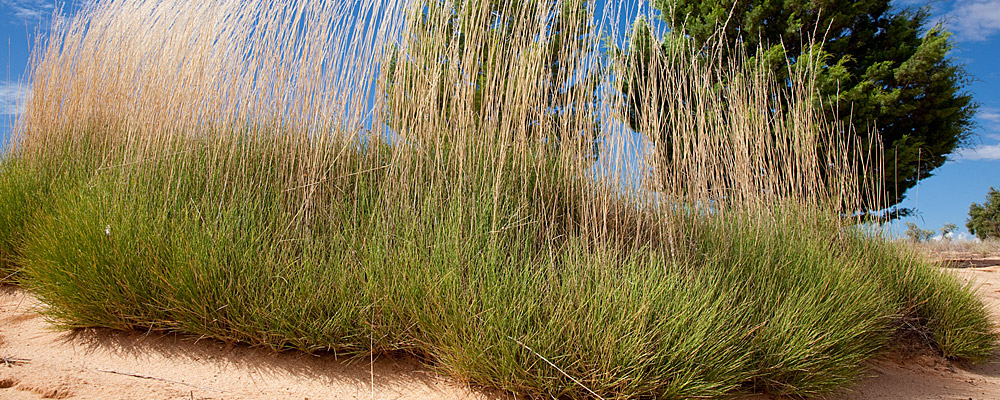Share Mungo Culture
The Three Tribal Groups
Today Three Tribal groups of Aboriginal people share this traditional Country while the care and management is in the control of the Two Traditional Tribal groups Paakantji and Ngyiampaa in the Willandra Lakes World Heritage Area and Mungo National Park. The Paakantji, Ngyiampaa and Mutthi Mutthi people walk here in the footsteps of their ancestors, ensuring their children grow strong in their culture. The tribal groups also seek to share their knowledge of Country with visitors to Mungo National Park.
The Paakantji and Ngiyampaa people jointly manage Mungo National Park with the New South Wales National Parks and Wildlife Service. People from all three tribal groups are employed in various positions in the park and run a program of Aboriginal Discovery Tours to share their heritage with visitors.
Being involved with Lake Mungo in this past four years, it's been an absolute joyride for me, and I just want to keep it going. I want to keep it going for Mum and Dad, I want to keep it going for my people, I want to keep it going for my children.
Sharon Kennedy, Ngiyampaa
Over the years I got interested in working with the archaeologists, doing research work and various projects up at Lake Mungo... The best part of my job is I'm staying on Country and looking after Country... It's showing the continual link of our people with the area... I feel good. I'm doing what I want to do. I like working on Country, being in the bush. I've got the best job in the world.
Darryl Pappin, Mutthi Mutthi
Joint Management
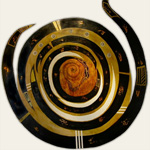
'Mungo - meeting place'
by Craig Charles, Mutthi Mutthi.
This painting represents spirit and place - the coming together of three tribes, the Mutthi Mutthi, Paakantji and Ngyiampaa. The centre spiral represents the middle of the Lake, the Walls of China and sacred sites. The many captions of gold leaf on the black swirls signify special 'sites' - uncovered and swept away by the winds. Three white swirls signify ceremonial grounds and the various lines and squares represent man-made sites which have come and gone. The gold represents the richness of the land and strength of its peoples.
